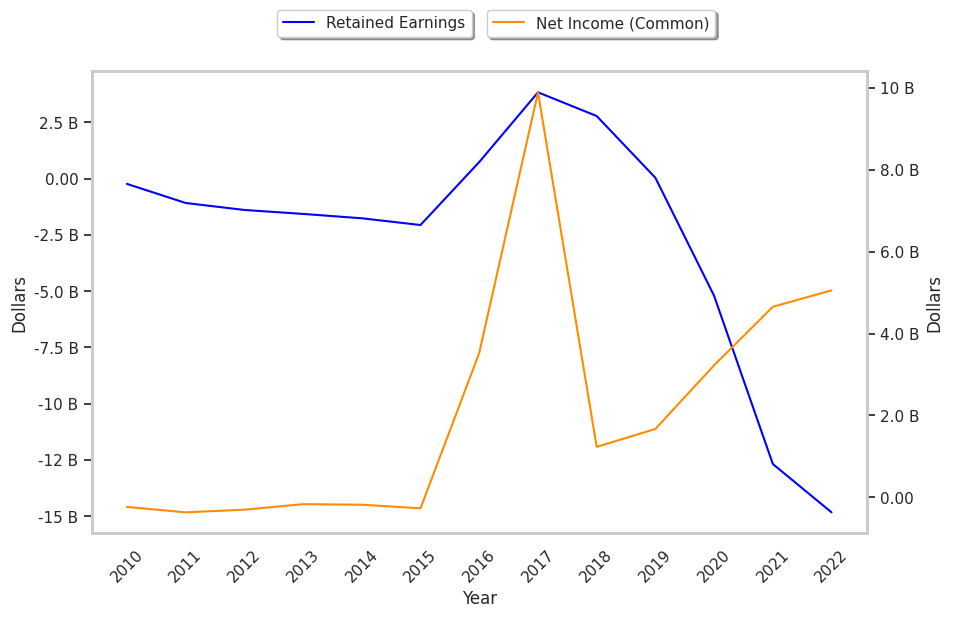Cable Television company Charter Communications is taking Wall Street by surprise today, falling to $409.54 and marking a -3.3% change compared to the S&P 500, which moved -1.0%. CHTR is -16.05% below its average analyst target price of $487.82, which implies there is more upside for the stock. However, the average analyst rating for the stock is hold -- a more pessimistic outlook than you might expect. Over the last year, Charter Communications shares have outstripped the S&P 500 by 5.0%, with a price change of 15.0%.
Charter Communications, Inc. operates as a broadband connectivity and cable operator company serving residential and commercial customers in the United States. The company is in the communication services sector, which includes primarily companies with a cyclical profile whose share price is correlated with macro economic cycles. The exception is large telecom companies, which are more defensive in nature since their share prices have a looser correlation with recessions.
Charter Communications's trailing 12 month P/E ratio is 13.8, based on its trailing EPS of $29.78. The company has a forward P/E ratio of 10.7 according to its forward EPS of $38.25 -- which is an estimate of what its earnings will look like in the next quarter. The P/E ratio is the company's share price divided by its earnings per share. In other words, it represents how much investors are willing to spend for each dollar of the company's earnings (revenues minus the cost of goods sold, taxes, and overhead). As of the first quarter of 2023, the telecommunications sector has an average P/E ratio of 18.85, and the average for the S&P 500 is 15.97.
It’s important to put the P/E ratio into context by dividing it by the company’s projected five-year growth rate. This results in the Price to Earnings Growth, or PEG ratio. Companies with comparatively high P/E ratios may still have a reasonable PEG ratio if their expected growth is strong. On the other hand, a company with low P/E ratios may not be of value to investors if it has low projected growth.
Charter Communications's PEG ratio of 1.55 indicates that its P/E ratio is fair compared to its projected earnings growth. Insofar as its projected earnings growth rate turns out to be true, the company is probably fairly valued by this metric.
An analysis of the company's gross profit margins can help us understand its long term profitability and market position. Gross profits are the company's revenue minus the cost of goods only, and unlike earnings, don't take into account taxes and overhead. Here's an overview of Charter Communications's gross profit margin trends:
| Date Reported | Revenue ($ k) | Cost of Revenue ($ k) | Gross Margins (%) | YoY Growth (%) |
|---|---|---|---|---|
| 2023 | 54,536,000 | 42,406,000 | 22 | 0.0 |
| 2022 | 54,022,000 | 42,060,000 | 22 | 10.0 |
| 2021 | 51,682,000 | 41,156,000 | 20 | 17.65 |
| 2020 | 48,097,000 | 39,692,000 | 17 | 21.43 |
| 2019 | 45,764,000 | 39,253,000 | 14 | 16.67 |
| 2018 | 43,634,000 | 38,413,000 | 12 |
- Average gross margin: 17.8 %
- Average gross margin growth rate: 10.8 %
- Coefficient of variability (lower numbers indicating more stability): 47.3 %
We can see from the above that Charter Communications business is not strong and its stock is likely not suitable for conservative investors.
To deepen our understanding of the company's finances, we should study the effect of its depreciation and capital expenditures on the company's bottom line. We can see the effect of these additional factors in Charter Communications's free cash flow, which was $3.55 Billion as of its most recent annual report. Free cash flow represents the amount of money available for reinvestment in the business or for payments to equity investors in the form of a dividend. In CHTR's case the cash flow outlook is weak. It's average cash flow over the last 4 years has been $5.34 Billion and they've been growing at an average rate of 5.1%.
Another valuation metric for analyzing a stock is its Price to Book (P/B) Ratio, which consists in its share price divided by its book value per share. The book value refers to the present liquidation value of the company, as if it sold all of its assets and paid off all debts). Charter communications's P/B ratio is 5.86 -- in other words, the market value of the company exceeds its book value by a factor of more than 5, so the company's assets may be overvalued compared to the average P/B ratio of the Telecommunications sector, which stands at 3.12 as of the first quarter of 2023.
Charter Communications is likely overvalued at today's prices because it has a very low P/E ratio, an elevated P/B ratio, and irregular cash flows with an upwards trend. The stock has mixed growth prospects because of its average net margins with a positive growth rate, and no PEG ratio. We hope this preliminary analysis will encourage you to do your own research into CHTR's fundamental values -- especially their trends over the last few years, which provide the clearest picture of the company's valuation.



